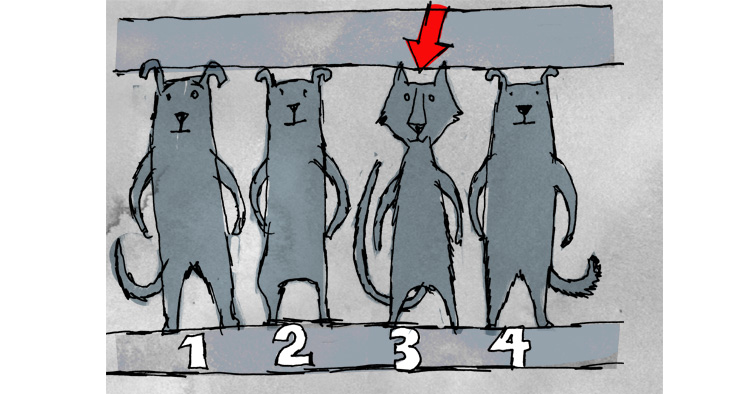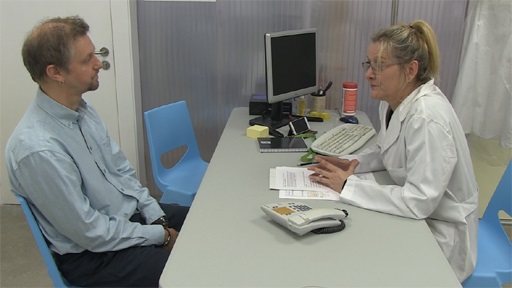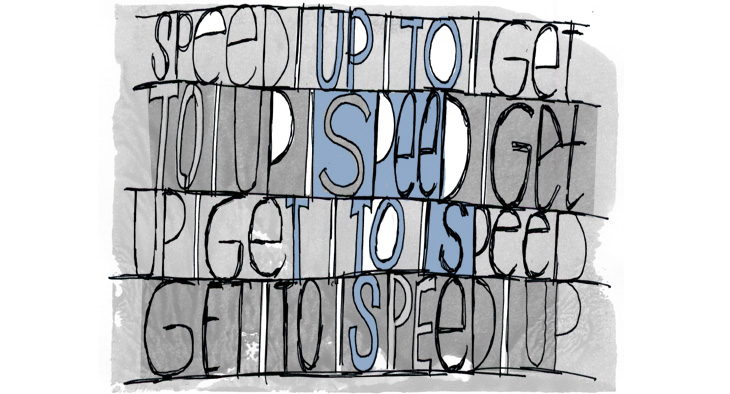In this section you will study strategies and language for giving patients and medical staff information, and for giving bad news to a patient.
1. Vocabulary review: Odd one out.

Do the vocabulary puzzle. Which is the odd word out in each line?
2. Listen and identify.

Listen to five extracts from conversations and match each one to the correct situation.
3. Listen and tick.

Listen to more of one extract from the previous exercise where a nurse is explaining to a patient.
Tick the things below that the nurse does.
5. Giving instructions.

Look at the notes, then listen and put them in the order that the doctor does these things.
Now use the notes to write what the doctor actually says when speaking to the patient. DON’T LISTEN to the audio again. Write what he says in the box first, and then compare your version with the original one.
Now click here to see the original version.
You can listen to the original version again here.
6. Giving bad news.
Watch the video of a doctor informing a patient of bad news. Mark the sentences true or false.
7. Giving bad news.
Predict the order that the doctor says the following sentences, then watch the video again to see if you are right.
8. Being tactful.
Choose the most appropriate option to complete sentences from the dialogue. All the options are grammatically correct, but one option is more tactful and appropriate for this particular situation, giving this news to the patient.
Now watch the video again and read the subtitles.
You can see the transcript of the dialogue here.
9. Using just.
Look at the two examples. Which sentence do you think sounds less direct or friendlier? Why?
Now I’ll take your temperature and blood pressure.
Now I’ll just take your temperature and blood pressure.
You probably chose the second sentence in answer to the question above. In English the word just is an adverb frequently used to soften or reduce the force of a statement, to suggest that something is not difficult or too important. This has a calming effect on the listener. Of course, just has other meanings as well, for example, to say that something happened recently or a short time ago.
Choose the function of just in each of the examples. Is it to soften or does it have the meaning of “recently”.
11. Useful phrases.
Spend a few minutes memorising the following sentences. When you are ready, click on “Start” and many of the words will disappear. Type the missing words in the boxes. If you have time, repeat this exercise and try to improve your time!
12. Pronunciation: Connected speech.

When we speak we tend to stress or emphasise the important words in a sentence – the ones that give information – and shorten and link together the other words. Stressing the information words gives the sentence rhythm when we speak.
Listen to this example.
First, I want to make sure I have all theinformation.Listen and write the sentences that you hear. Use contractions when possible, and remember to end each sentence with a full stop or question mark.
Now listen to the sentences again and practise saying them at the same speed and stressing the information words.
Speaking Tutorial 2 (Practise giving a patient bad news.)
In this tutorial your tutor will play the role of a patient and you will play the role of a doctor giving the patient bad news. Either use the same situation as in the video in this section or, alternatively, use a scenario of your choice.
Remember to do the following:
- Introduce yourself
- Assess the patient's perception of the case
- Obtain the patient’s invitation to explain the case
- Give the patient important information about the case
- Address the patient with empathy
- Provide a strategy and summarise what will happen next
Try to use phrases that you practised in this section:
Useful phrases
So, could you just tell me …
I just want to get up to speed with …
Do you have any thoughts about why …
First, I want to make sure I have all the information.
As I said, …
I’m afraid there is something that is potentially worrying.
What we need to do now is …
I’m very sorry to have to tell you this, but …
Do you have any questions at this stage?
In answer to your question, …
I understand that I have just given you a lot of information, …
It’s important to say at this stage that…
I wonder if you might want to read this before…
